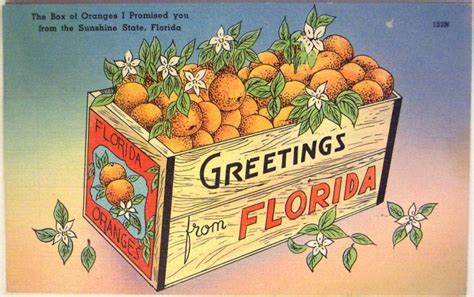
Florida citrus Ping..................
Posted on 04/28/2022 11:26:48 AM PDT by Red Badger
While commercial citrus growers in Florida are keenly aware of where the industry stands with citrus greening, I get many questions from the general public about the disease and citrus in general, so I thought an update on the situation was fitting.
I’ll start with a quick history lesson to bring us all up to speed.
Citrus greening or HLB is short for Huanglongbing, a bacterial disease that affects nearly all types of citrus and ultimately cause trees to die. Many have reported that it is the worst disease to ever impact citrus.
The disease is vectored or transmitted by the Asian citrus psyllid, a small flying insect that feeds on plant tissue. The disease was first reported in Florida in Miami-Dade County in 2005 and in the 17 years since it has been estimated that citrus production in the state has declined by close to 75 percent.
A healthy grove in today’s HLB era.
It starts by impacting the tree’s root system and then vascular tissue up the tree and causes a myriad of symptoms including, but not limited to: die back of all parts of the tree, fruit drop, poor fruit quality and fruit distortion, and overall poor tree health.
Unfortunately, there is still no silver bullet cure for the disease. Researchers from the University of Florida/IFAS and other research institutions all over the world have been working towards solutions since the implications of the disease became apparent early on.
There are, however, some good management strategies and developments that have come out to best manage groves and stay productive (and in business!) in spite of HLB. As well, there are some advances in breeding and genetics and other technologies that producers can be encouraged about for the future of the industry.
Two of the best management strategies for citrus in todays HLB era sort of fit together in tandem – optimized water and nutrient uptake. These two things are often referred to as irrigation and fertilization, respectively, but that is not always the case as rainfall and ‘free’ existing nutrients in the soil have to be considered as well.
Sugar Belle®, one of the recommended citrus cultivars recommended for homeowners, partly due to tolerance to HLB.
That said, the point is that it is imperative that citrus trees have adequate water and nutrients when living with a disease, or the likely potential to have a disease, that affects root and vascular tissue. While a lot could be said about this topic, the short of it is that trees do better when provided smaller but adequate doses of water and nutrients at more frequent intervals since our sandy Florida soil doesn’t hold on to either very well.
More and more growers are also starting to see the benefits of improving overall soil health by utilizing cover crops and composts; both help build organic matter and increase biological life in the soil that in turn helps with water and nutrient holding capacities and uptake by the tree.
These practices are not new, but rather old practices that are coming back around because we have been reminded of their value.
Other than soil health and water and nutrient management strategies, breeding efforts have and will play a significant role in overcoming the severe implications of HLB. There have been several varieties released to commercial growers that have shown tolerance to the disease and been a big help to the industry.
A soil moisture sensor at a Lake County citrus grove. A couple examples of these are OLL4 and Sugar Belle®, both of which are recommended for the home landscape. While tolerance to a disease is great, the higher goal and hope for researchers and growers alike is a resistant tree.
Tolerance to a disease means that the tree can have the disease but still maintain a ‘tolerable’ amount of productivity to prove economical while resistance means that the tree has a greater ability to ‘resist’ getting the disease or at least much slower to develop symptoms.
There are other strategies currently in play but I am out of space! Those who would like to learn more can find plenty of information by searching online with keywords such as citrus, HLB, UF/IFAS, citrus research and education center.

Florida citrus Ping..................
ISWYDT....................
Here in the SF Bay Area, we had the Mediterranean Fruit Fly 40 years ago. We had helicopters flying over us spraying Malathion for days. It was successful, but it drove people mad having the poison sprayed all over the area.
“Nothing good comes out of foreign countries:”
Obama
We have many other types of trees that don’t seem to get impacted.
Apparently most trees produce one or more resisting substances that citrus trees don’t.
Genetically modified trees should be developed and marketed.
The European nutcases may not like that, but I like orange juice.
Like I said.
There were quite a few horror stories of whole orchards destroyed by agents of the state government in the mid-2000's. But it's been quite a while since I heard anything more about this problem.


bookmark...
a friend of mine in port saint lucie came home from work to two missing orange trees in his back yard when that was going on...
he was not happy...
“Our ancestors . . . “
Look where that got us.
I live next to a swamp. The greening and black mold are horrible to my orange tree. The only thing I’ve found to work is nano silver water with some dishwashing liquid mixed in then sprayed on the tree every few weeks.
And, in Brazil. Their greening problems, as I understand it, were much worse than ours. Many citrus companies in Florida are now owned by Brazilians. Many of the growers have tried planting older generation trees, before all of the hybrids started showing up, that supposedly resist greening!
Citrus greening came later. Caused by a flying insect, the Asian psyllid, citrus greening cannot be controlled by the methods used for citrus canker. The infected trees are not contagious; the flying insects carry the disease. So many beloved dooryard citrus have been destroyed by citrus greening. I speak from experience as a homeowner and a Master Gardener.
Also has showed up in Israel.
Diseases trees are probably the cause of so many libs coming to Florida.The minute a grove is declared diseased the trees are mowed down and a year later there is a new subdivision full of yankees.
How many of those groves especially in your area are now housing developments?
Swapping one disease for another.....................
Disclaimer: Opinions posted on Free Republic are those of the individual posters and do not necessarily represent the opinion of Free Republic or its management. All materials posted herein are protected by copyright law and the exemption for fair use of copyrighted works.